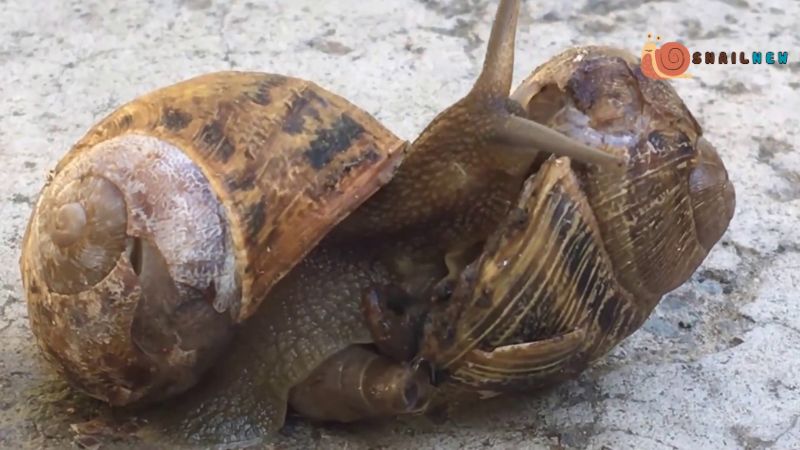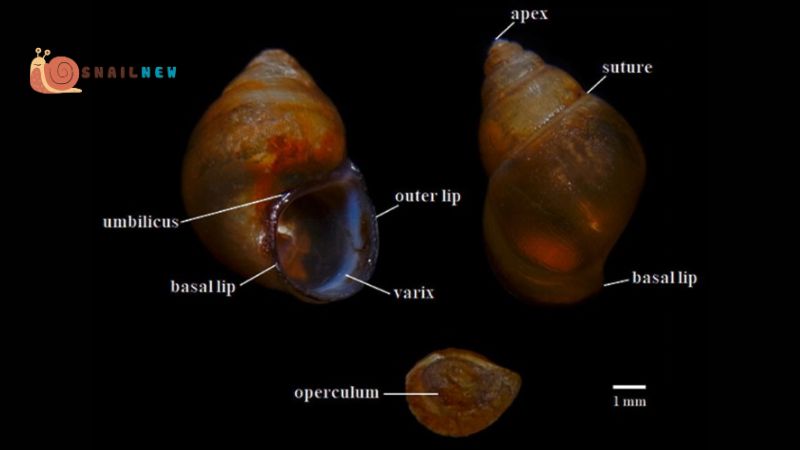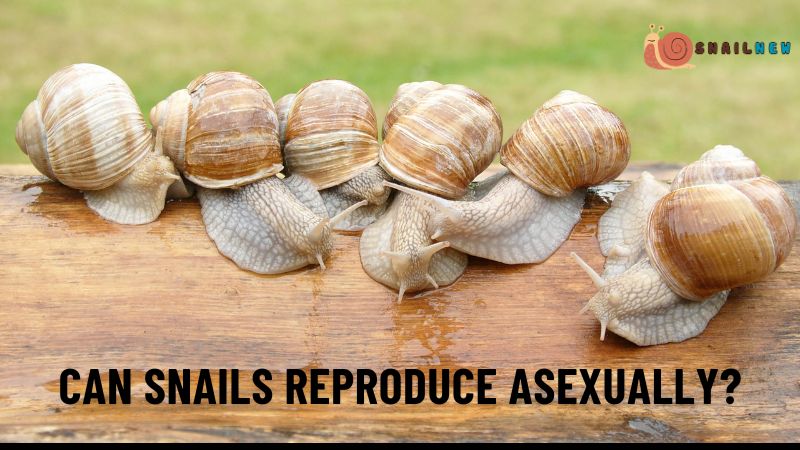In the realm of reproduction, snails showcase a remarkable diversity of strategies. While sexual reproduction is the norm across the animal kingdom, certain species of snails have evolved the ability to reproduce asexually, a phenomenon known as parthenogenesis. This biological adaptation offers intriguing insights into the resilience and adaptability of these gastropods. This article by Snailnew delves into the intricacies of asexual reproduction in snails, or “can snails reproduce asexually”, exploring its mechanisms, significance, and evolutionary implications.
Table of Contents
ToggleThe Basics of Asexual Reproduction:
A fundamental aspect of understanding asexual reproduction in snails is grasping the concept of parthenogenesis. In parthenogenesis, offspring develop from unfertilized eggs, eliminating the need for mating. This process can occur through various mechanisms, including automixis and apomixis, each with its own nuances and implications.

Automixis involves the fusion of two unreduced egg cells, resulting in genetic variation among offspring despite the absence of fertilization. On the other hand, apomixis bypasses meiosis entirely, with eggs developing into embryos without genetic recombination. These mechanisms underscore the adaptability of snails in utilizing diverse pathways to ensure reproductive success.
Can Snails Reproduce Asexually?
Yes, some species of snails are capable of asexual reproduction. This process is called parthenogenesis, where offspring develop from unfertilized eggs. However, not all snail species reproduce this way; some still rely on sexual reproduction.
The Diversity of Asexual Reproduction in Snails:
Within the vast array of snail species, the prevalence and mechanisms of asexual reproduction vary significantly. Some species exclusively rely on asexual reproduction, while others exhibit a mix of sexual and asexual strategies, depending on environmental conditions and population dynamics.

One of the most fascinating aspects of asexual reproduction in snails is its adaptability to fluctuating environmental factors. When resources are abundant and conditions are favorable, snails may primarily reproduce sexually, promoting genetic diversity and resilience. However, in challenging environments or during population bottlenecks, asexual reproduction can serve as a rapid and efficient means of propagation.
The Evolutionary Implications:
The ability of snails to reproduce asexually has profound evolutionary implications, shaping their genetic diversity, ecological interactions, and evolutionary trajectories. Can snails reproduce asexually? The answer lies in the intricate interplay between genetic predispositions, environmental pressures, and reproductive strategies.
Repeated occurrences of asexual reproduction can lead to the accumulation of deleterious mutations and the loss of genetic diversity within populations. However, in certain contexts, asexual reproduction confers immediate advantages, such as rapid colonization of new habitats and population expansion in resource-limited environments.
Furthermore, the coexistence of sexual and asexual reproduction within snail populations can foster complex dynamics, including the maintenance of genetic variation through occasional sexual recombination and the persistence of asexual lineages under specific selective pressures.
Case Studies in Asexual Reproduction:
To illustrate the diverse manifestations of asexual reproduction in snails, let us examine several notable case studies across different taxa and ecological settings.
In certain freshwater snail species, such as the New Zealand mudsnail (Potamopyrgus antipodarum), asexual reproduction predominates, facilitating rapid population growth and range expansion. This prolific reproductive strategy has raised concerns about invasive potential and ecological impacts in regions where these snails have been introduced.
Conversely, in terrestrial snails like the brown garden snail (Cornu aspersum), asexual reproduction occurs alongside sexual reproduction, with environmental cues influencing the prevalence of each mode. This flexibility enables these snails to adapt to diverse habitats and reproductive challenges, highlighting the adaptive significance of reproductive plasticity.
The Role of Genetic Variation:
While asexual reproduction in snails can lead to reduced genetic variation within populations, occasional sexual recombination remains essential for the long-term maintenance of genetic diversity and evolutionary potential. Can snails reproduce asexually? Yes, but the presence of sexual reproduction ensures the resilience of snail populations in the face of changing environmental conditions and evolutionary pressures.

Moreover, genetic variation resulting from sexual recombination provides raw material for natural selection to act upon, promoting the emergence of novel traits and adaptive strategies. Thus, the interplay between sexual and asexual reproduction in snails underscores the complex dynamics of evolutionary change and population genetics.
Conservation Implications:
Understanding the dynamics of asexual reproduction in snails is crucial for conservation efforts aimed at preserving biodiversity and ecosystem stability. Can snails reproduce asexually? This question gains relevance in the context of anthropogenic disturbances, habitat degradation, and climate change, which can influence the prevalence and consequences of asexual reproduction in snail populations.
Conservation strategies must consider the adaptive potential of snails, including their capacity for both sexual and asexual reproduction, to ensure the long-term viability of endangered species and vulnerable ecosystems. Additionally, monitoring genetic diversity and population dynamics can inform targeted interventions to mitigate the negative impacts of asexual reproduction, such as the spread of invasive snail species.
Conclusion:
In conclusion, the phenomenon of asexual reproduction in snails offers a fascinating glimpse into the evolutionary ingenuity of these gastropods. Can snails reproduce asexually? The answer is not merely a yes or no but a nuanced exploration of the ecological, genetic, and evolutionary factors that shape reproductive strategies in snail populations.
From the freshwater streams to the terrestrial landscapes, snails exemplify nature’s ability to adapt and thrive in diverse environments through a combination of sexual and asexual reproduction. By unraveling the complexities of reproductive biology in snails, we gain valuable insights into the mechanisms driving evolutionary change and the resilience of life in all its forms.
Related Posts:
- Do Snails Have Brains? A Fascinating Journey into…
- Exploring the Aquatic Realm: Can Snails Breathe Underwater?
- Exploring the Lifespan of Snails: How Long Do Snails Live?
- Can Snails Feel Pain? Exploring the Enigmatic Question
- Do Snails Have Hearts? Unveiling the Intricacies of…
- How Do Snails Breed? The Fascinating World of Snail…


